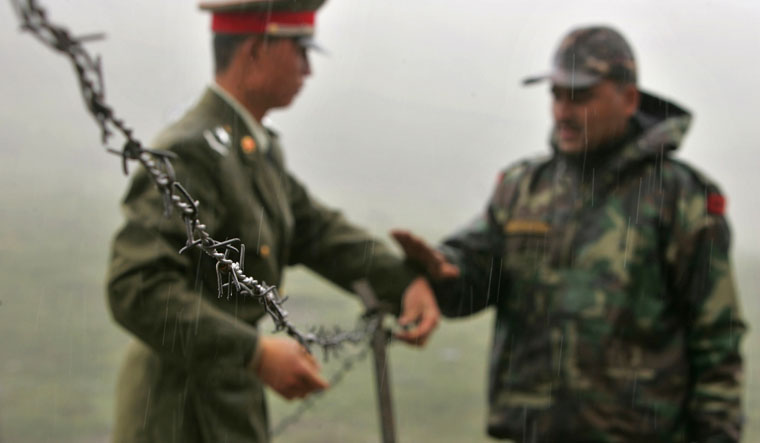Five rounds of three-star general-level talks, two special representatives' (Ajit Doval and Wang Yi) meetings and multiple rounds of local military commander rank dialogue failed to bring in status quo ante at the India-China border in Eastern Ladakh.
Hundred days have gone since India and China, the world's two major militaries, are in an eyeball-to- eyeball situation on over 800 km-long border in Ladakh. In between, three rounds of diplomatic negotiations by Working Mechanism for Consultation and Coordination on India-China Border Affairs have also taken place. On May 5, the first scuffle between Chinese and Indian troops was reported in the Pangong Tso area.
Both sides have prepared for a long haul during winters, as Chief of Defence Staff General Bipin Rawat made it clear to a parliamentary panel that Indian military will be there for winter with additional deployment.
Indian military planners believe that things seem to be out of their control. "Now, only a political intervention can resolve the issue. Military side has done enough with repeated marathon discussions," said a defence official based in South Block, which houses the ministry of defence. Last Sunday's talk between Major Generals of both sides on Depsang plains could not make any headway.
"They (China) are not going to give up. The first move always matters in any war. Though we picked up our moment in early April, it appears that we deliberately kept it under the wrap to avoid any panic alarm in the establishment," another officer privy to the development told.
A former Army commander said that when the then defence minister George Fernandes had said China is our number one enemy, no one paid any attention to him. And security establishments put all its resources towards Pakistan.
After two weeks of hectic diplomatic negotiations, 73 days of Doklam issue was resolved as both sides agreed to pull back from the tri-junction (India-China-Bhutan). Only 1986 Sumdorong Chu skirmish continued for nearly three years.
But, the current tension is on multiple locations on Line of Actual Control (LAC). On top of it, Indian Army has lost 20 of its troops in Galwan clash, besides ten Indian soldiers including three officers being taken captive by the Chinese People's Liberation Army in the June 15 incident.
"If you read statements by the Chinese authorities, they claimed to have done the disengagement without mentioning about the status quo ante April. It shows their (Chinese) adamant and aggressive behaviour," said a senior officer.
Indian side has been reiterating its stand on restoring status quo ante April 2020 in Eastern Ladakh and complete pullback of Chinese military from Pangong Tso, Gogra and Depsang plains. Though some pullback has taken place in Galwan and Hot Spring areas, situation remains unchanged in other areas.
On the Pangong Lake, Chinese have already made their claims. Chinese ambassador Sun Weidong, during a webinar, said that "on the northern bank of Pangong Lake, China’s customary boundary line is in accordance with the LAC. China has not expanded its territorial claim.”
Military experts believe that by amassing a huge number of troops along with artillery and armoured support, China wants to dominate the entire Himalyan mountains from Shaksgam Pass to Arunachal Pradesh.



